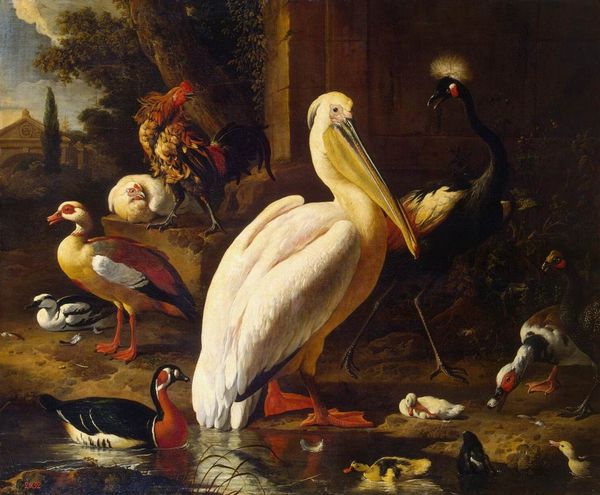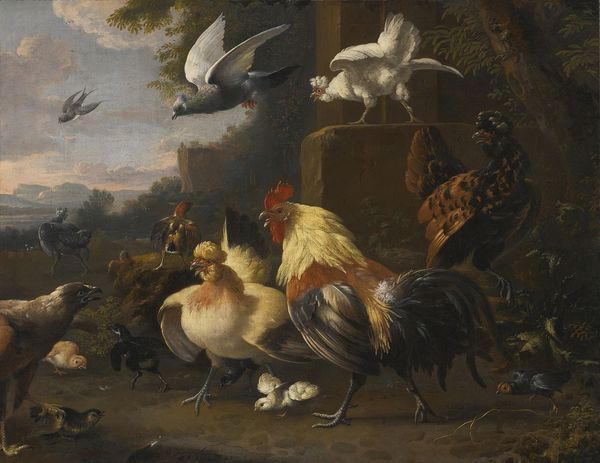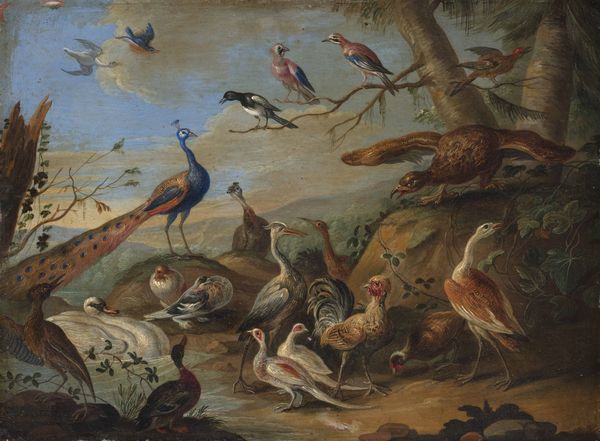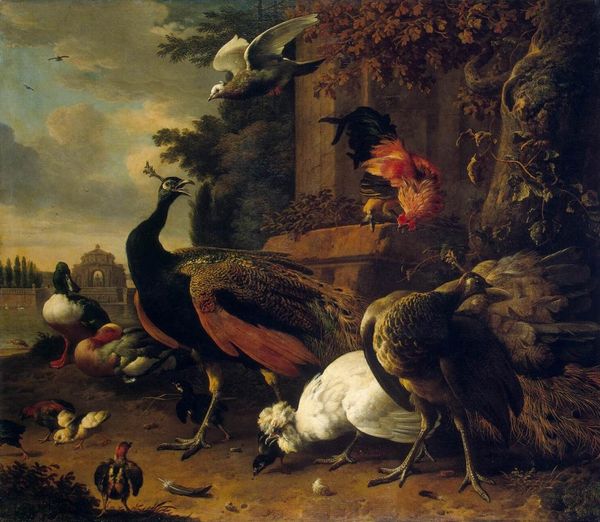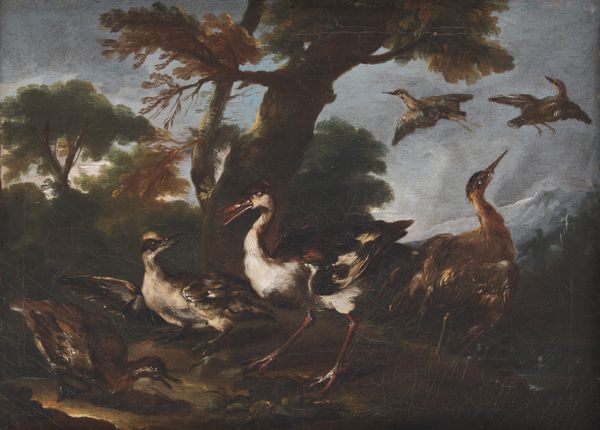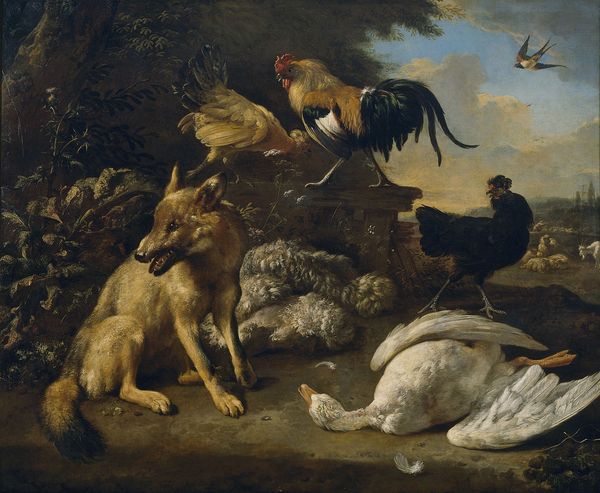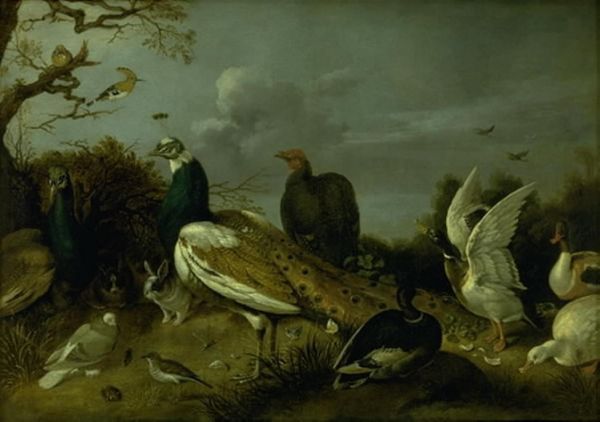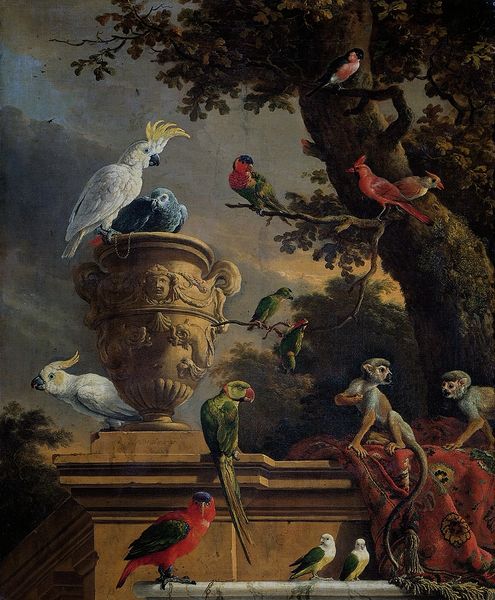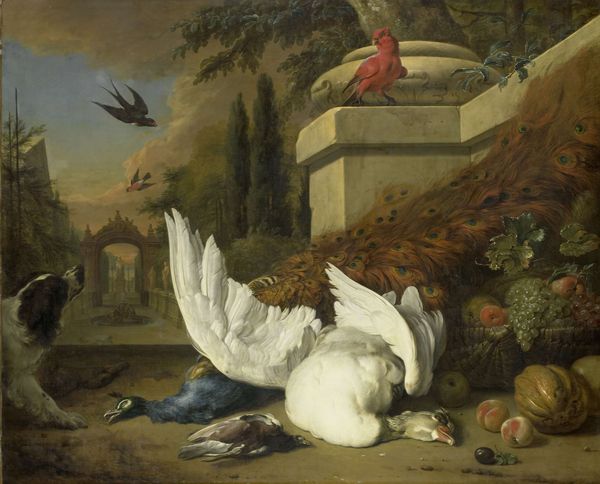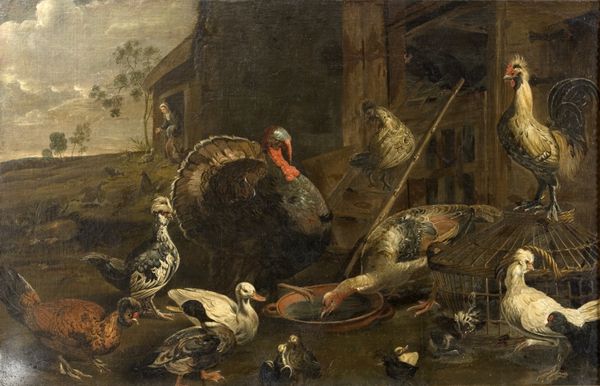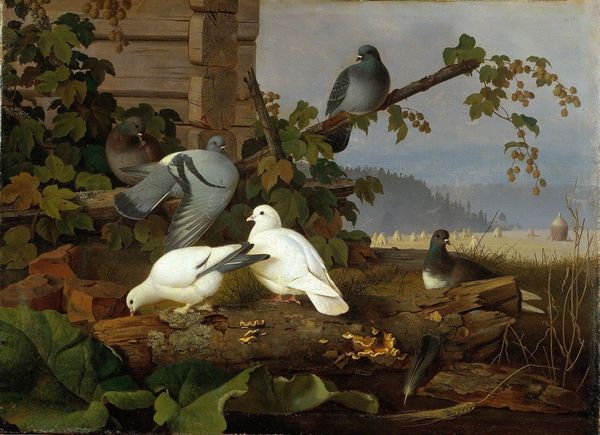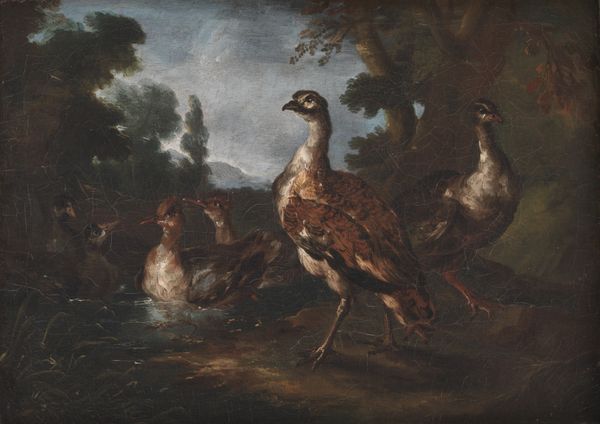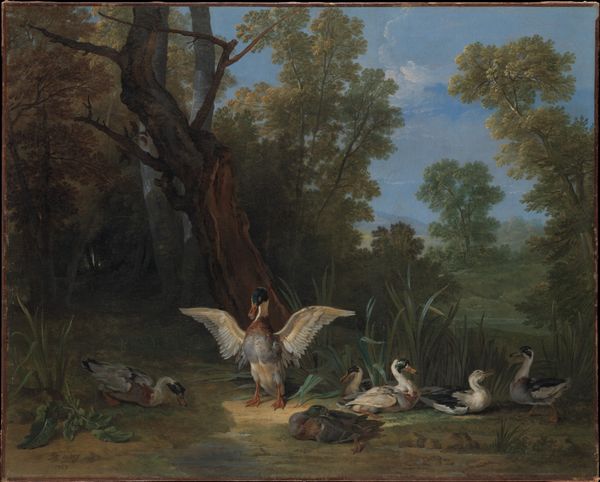
painting, oil-paint
#
baroque
#
painting
#
oil-paint
#
landscape
#
bird
#
oil painting
#
animal portrait
#
water
#
genre-painting
Copyright: Public domain
Curator: Look at this lively gathering! "A Pelican and Other Birds Near a Pool," sometimes called "The Floating Feather," painted around 1680 by Melchior d'Hondecoeter. Oil on canvas, of course, the master of birds at his best. Editor: It feels a little crowded, doesn’t it? Like stepping into a very elaborate avian dinner party. The light's interesting though; there’s a drama to it. Almost theatrical. Curator: D’Hondecoeter definitely staged these scenes. These aren't barnyard fowl but exotic specimens imported into the Netherlands. This reflects the period’s fascination with global exploration and colonial power—these birds became status symbols, part of elaborate collections in country estates. Editor: Status symbols painted with… perhaps a hint of satire? That haughty crowned crane seems to be judging everyone. And the pelican front and center looks rather pleased with itself. Or is it my imagination projecting? Curator: Well, there's certainly a performative aspect! Consider how these creatures are positioned: almost arranged like actors on a stage. Note the varied textures, too: the velvet black of that other crane compared to the rougher feathers of the ducks, everything so precisely rendered. D’Hondecoeter really captured the unique textures of each animal's plumage. Editor: The colors too, are carefully selected to create movement. That flash of red against all the muted browns and creams really grabs your eye. But ultimately what fascinates me are those moments in between, almost like d'Hondecoeter froze a conversation. Are they bickering, preening, flirting? There’s an entire social world going on here. Curator: Absolutely. And it says so much about the human world observing them. Dutch Golden Age paintings loved to blur the lines between accurate representation and moral lessons, all tied up in mercantile ambition and newfound global interconnectedness. Even something as seemingly simple as a bird portrait holds so much significance. Editor: Right, I guess even bird parties have their power structures. Curator: Indeed! So next time you encounter some avian company, consider the layered stories their portraits might reveal! Editor: Something to tweet about, for sure.
Comments
No comments
Be the first to comment and join the conversation on the ultimate creative platform.
